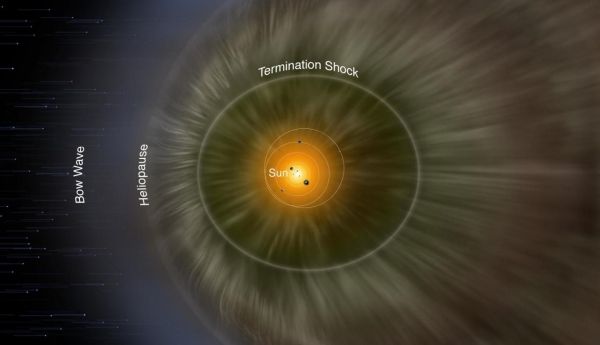For the first time, the boundary of the heliosphere has been mapped, giving scientists a better understanding of how solar and interstellar winds interact.
“Physics models have theorized this boundary for years,” said Dan Reisenfeld, a scientist at Los Alamos National Laboratory and lead author on the paper, which was published in the Astrophysical Journal today. “But this is the first time we’ve actually been able to measure it and make a three-dimensional map of it.”
The heliosphere is a bubble created by the solar wind, a stream of mostly protons, electrons, and alpha particles that extends from the Sun into interstellar space and protects the Earth from harmful interstellar radiation.
Reisenfeld and a team of other scientists used data from NASA’s Earth-orbiting Interstellar Boundary Explorer (IBEX) satellite, which detects particles that come from the heliosheath, the boundary layer between the solar system and interstellar space. The team was able to map the edge of this zone — a region called the heliopause. Here, the solar wind, which pushes out toward interstellar space, collides with the interstellar wind, which pushes in towards the Sun.
Read more at DOE/Los Alamos National Laboratory
Image: A diagram of our heliosphere. For the first time, scientists have mapped the heliopause, which is the boundary between the heliosphere (brown) and interstellar space (dark blue). (Credit: NASA/IBEX/Adler Planetarium)


